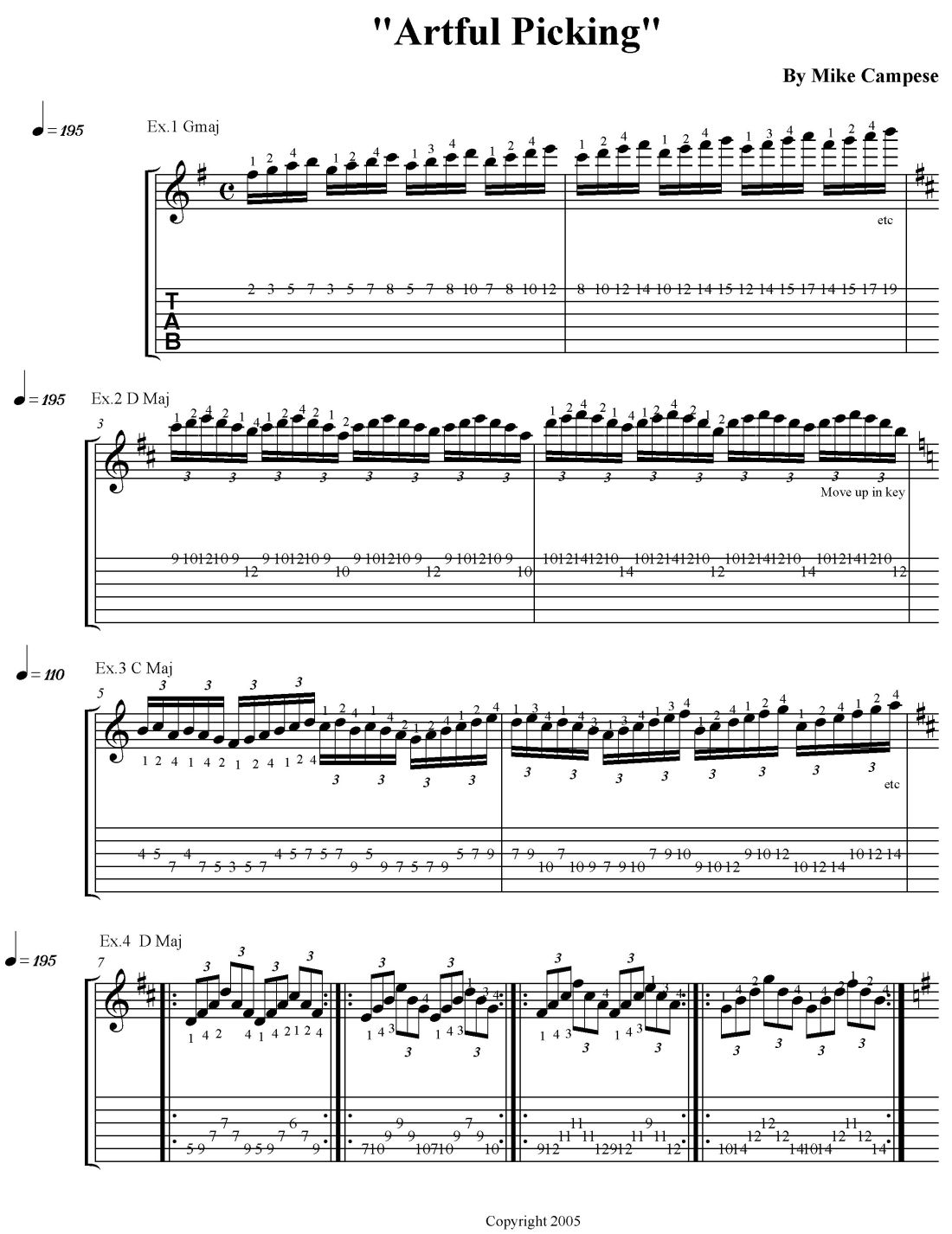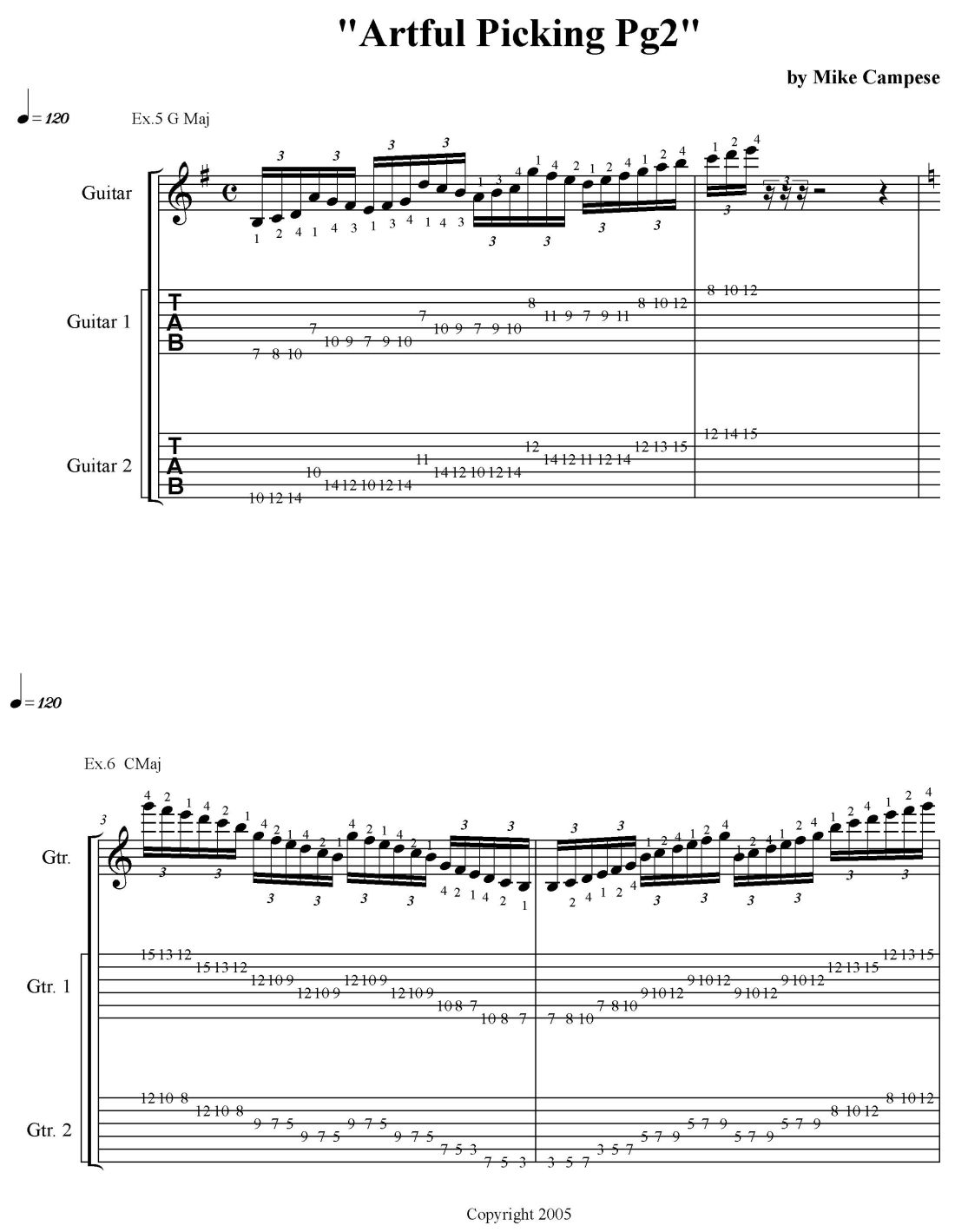Welcome back everyone! It's the New Year, so we have to make sure we continue to progress and keep our playing in shape. In this lesson I will show you some exercises to get your picking hand in shape. I put together some musical examples that will help you synchronize both hands, increase your speed, and give you ideas to make up your own examples. OK, grab your metronome or drum machine and let's get started.
Example 1. This is a G major scale, 4 note per string pattern, on one string. This example is played using 16th notes. Make sure you accent the first note of every beat and both hands should be in sync. This way of playing will help you learn your neck better and increase your speed. Try this in all scales on all strings. Also make sure you follow the fingerings i gave you.
MP3 - Example 1
Example 2 is a 2 string idea in D major (D, E, F#, G, A, B, C#). Basically this is a repeated phrase on the E string, and we jump down to the B string changing the lower notes. This one sounds cool at high speeds. Make sure your hands are in sync.
MP3 - Example 2
Example 3 is another 2 string idea; this one is in C major using sextuplets, 6 notes per beat. We are just moving the same pattern around in the key of C. A good way to make these types of patterns musical is to move them around the neck in key. Also mix up the patterns, so it is not so predictable.
MP3 - Example 3
Example 4 is one of my favorite types of patterns. Picking between 3 strings, this makes a great workout for your right hand. Basically we are picking 7th arpeggios in D major, moving up the key from the root to the 7th. I like the sound of picking every note as opposed to sweeping. I mean, make sure you can do it both ways. Use other arpeggios and note combinations - and make sure you accent.
MP3 - Example 4
Example 5 is a string skipping example, ascending up the neck in G major. Accent the 4th note of every phrase. This phrase is harmonized in 3rds. Harmonizing these types of lines adds a cool effect. It is important to have the timing really tight when you're harmonizing lines; both parts should be locked together.
MP3 - Example 5
Example 6 is a long sextuplet pattern in C Major, that runs across the neck very quickly. This one is also harmonized. It is based off a 6 note scale pattern in 3 octaves. Basically you go up 12 notes then go back up one string for another12 notes, etc. Make sure you follow the fingerings.
MP3 - Example 6


OK, this wraps up our lesson. These are just some examples to get you started. Always create your own and experiment.
If you have any questions, feel free to email me. Be sure to check out my CDs on this amazing site and check out my new CD release, "Vibe". Visit mikecampese.com for more information.
Mike Campese is an all-around music performer, session artist and teacher competent in many musical styles, electric and acoustic. He has studied at G.I.T. (Honors Graduate), and with Paul Gilbert, Norman Brown, Stanley Jordan, Scott Henderson and Keith Wyatt.